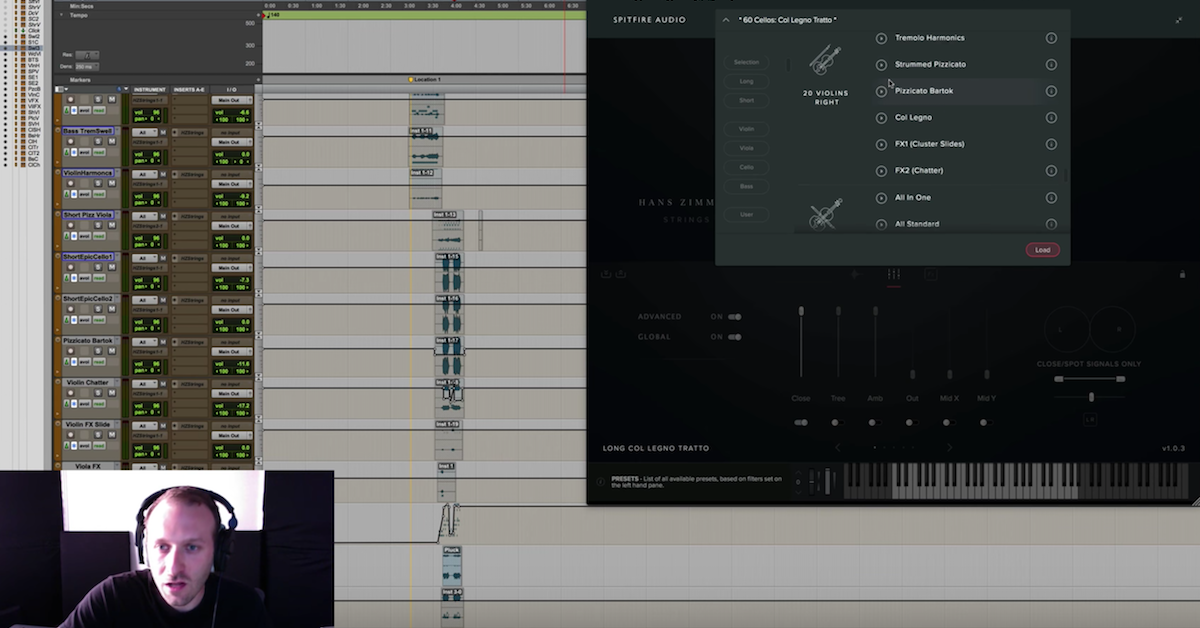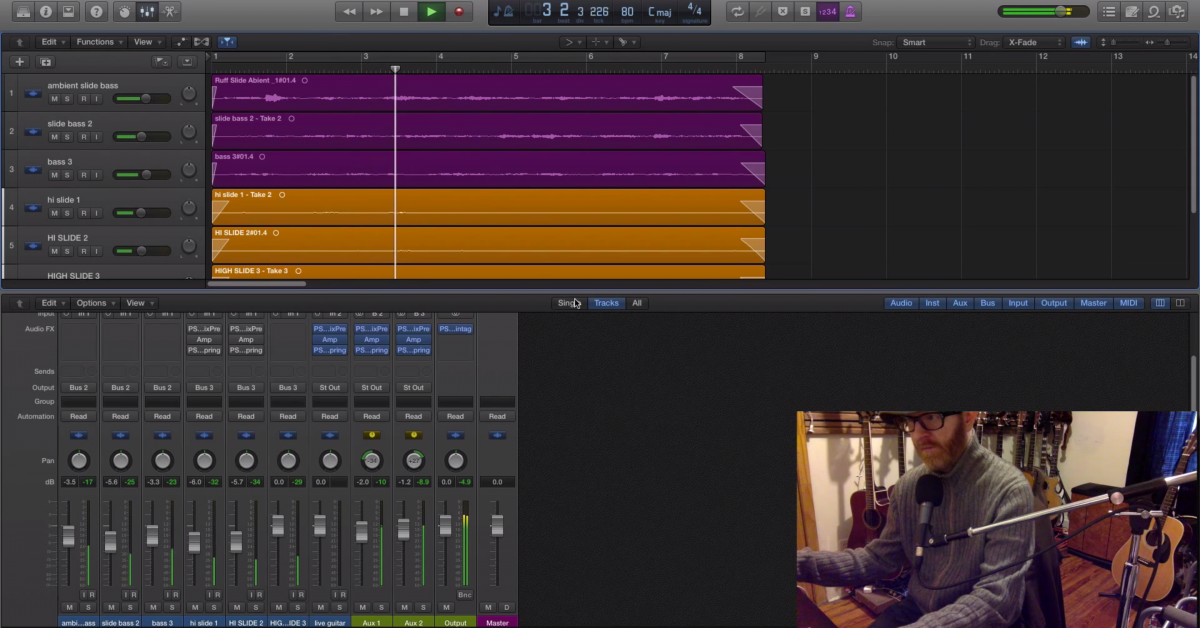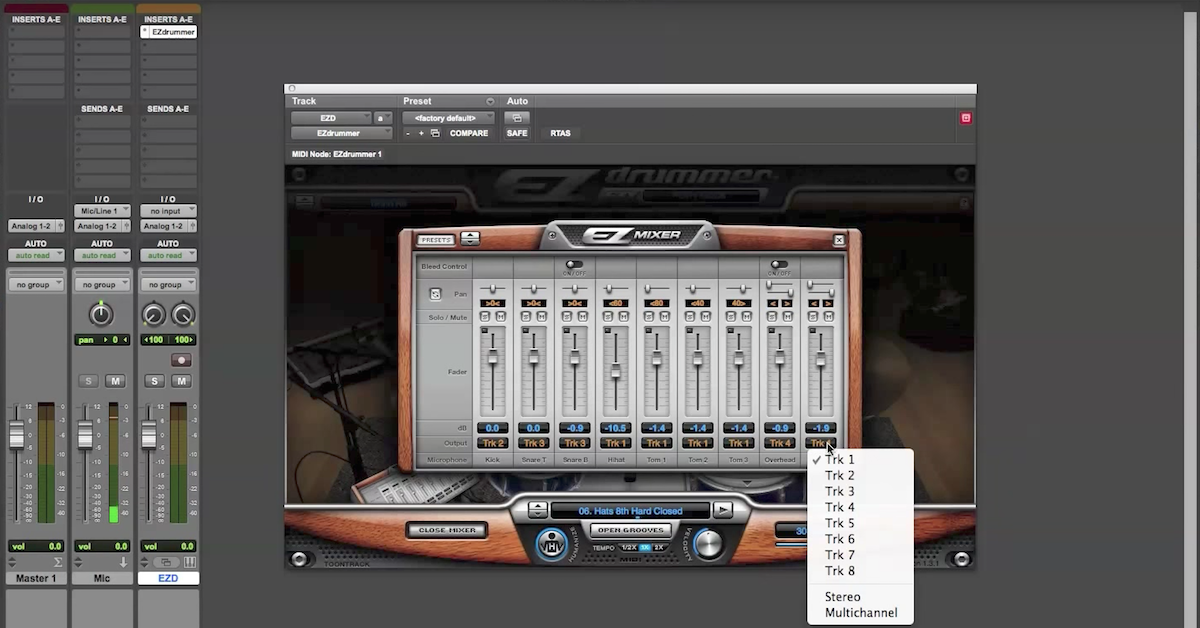15 Favorite Spitfire Audio Instruments
Article Content
Spitfire Audio make superb instruments and their ever-expanding catalog of pristine orchestral samples and extended instrumental techniques are derived from recordings of some the finest players in the UK and recorded by audio engineers operating at the highest levels of the art form.
Their collaborations with renown composers, orchestras, chamber groups and soloists have resulted in a unique collection of playable sounds, informed by contemporary aesthetics and the language of experimental, textural and systems music.
The company was founded by two composers: Christian Henson and Paul Thomson. Unable to find the sounds they were looking for in existing libraries, they decided to record their own string samples at the legendary Air Studios in London and shared the collection with a few select friends and colleagues. Word of mouth quickly spread and the demand for their unique offerings inspired the creation of Spitfire Audio. Over 12 years and 60 libraries later, Spitfire continues to produce amazing virtual instruments driven by the needs of working composers.
What follows is an overview of some of my personal favorites from the Spitfire catalog. I have organized instruments into three categories:
- Kontakt-Based Libraries (requiring the sampling instrument from Native Instruments; the free version may work for some, but the full version is usually required for complete functionality)
- Plugins (VST/AU/AAX)
- Free (yes … free)
Kontakt-Based Libraries
Many of Spitfire’s Kontakt-based libraries use a similar if not identical graphic interface, which makes switching between instruments relatively easy because of the familiar controls and signal path. Master any one of the string libraries and you will quickly find your way around the others. That said, I’ll try not to be redundant by re-explaining similar features more than once.
Orchestral/Chamber Libraries
1. London Contemporary Orchestra Strings
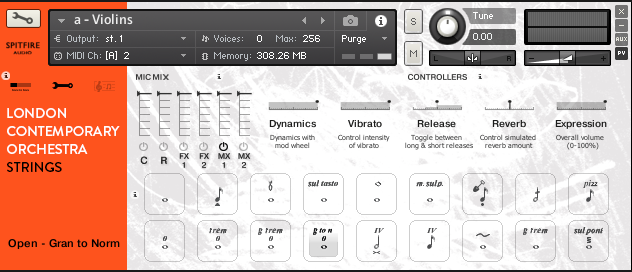
This collection boasts “never before” sampled articulations and techniques such as a detuned open string effect, granular to ord. transitions, spectral scrubs, woozy vibrato, irregular tremolo, twitchy FX and scrapes. It’s a great collection for creating textures and FX-based underscore. You can also layer articulations by shift-clicking to select multiple settings, allowing for a multitude of combinations and possibilities. Of course, all standard articulations are available as well. See my article, “String Articulations: Terminology and Effects” for a quick overview of string articulations in general.
The Ostinatum section allows for the creation of rhythmic ideas and arpeggios (available for certain articulations only). Up to eight patterns can be saved. Articulations are key switchable and samples can selectable loaded to conserve RAM. Spitfire developed the UACC specification that aims to achieve consistent CC32 values for articulations across instruments in their catalog. Automating value changes in CC32 in your DAW will change articulations accordingly. This allows access to dozens of articulations and FX without using up any keys on your MIDI controller. And similar articulations can be retained while changing between instrumental libraries.
Round-robin settings improve realism by adding variation to similar events. There are several modes that use up to eight samples for a given note including those such as “Neighboring Zones” — which can produce up to 24 different sounding notes when pressing a key by pulling from neighboring zones.
MIDI mappable expression parameters include dynamics, vibrato, release (which can blur transitions in slow legato passages for increased realism), reverb and expression. The Microphone Mixer allows for mixing between close and room mics, as well as some custom configurations by the recording engineer, Joe Rubel. Additional controls include those for Stereo Spread and Velocity Curve.
What makes the LCO collection particularly attractive are the specialized articulations and textural effects. But it is a great library for any situation requiring strings in general.
2. Chamber Strings
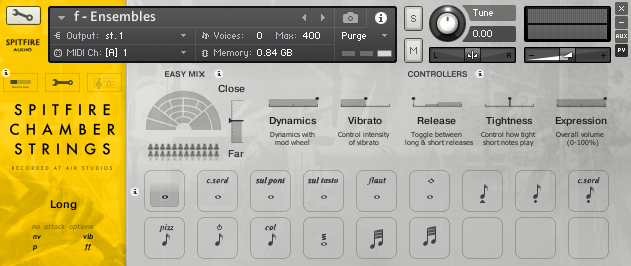
The Chamber Strings library sounds immediately great! It was compiled from recordings of a 16-piece string ensemble and provides tighter control and a more defined sound without losing the spacious feel of The Hall at Air Studios, London.
The interface and layout is similar to many other Spitfire instruments and you’ll find many of the same features mentioned above including, mic mixing, stereo spread, round-robin settings, ostinatum, etc.
The focus of this collection is detail as opposed to epic string masses. Paradoxically, you can achieve intimate results while retaining a large sense of space. The Easy Mix mic settings offer a simple way to experiment with close and far mic positioning, and the tightness parameter allows for more detailed control over short notes.
For smaller string groupings and a more detailed sound, this collection is fantastic!
3. Studio Orchestra Series


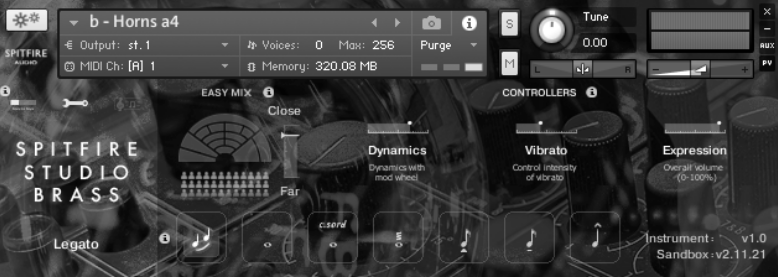
The Studio Series includes component libraries — Strings, Brass and Woodwinds which can be purchased independently or bundled. These are dry stage libraries designed to compliment the more reverberate sound of other Spitfire orchestral offerings. These sounds provide a solid foundation for experimentation with custom reverbs and effects chains. You will get a complete collection of wind and brass instruments in solo and multiple configurations, and exhaustive choices for string sections. All the standard articulations are there along with some nice extended technique additions like key noise and air in the wind library, as well as a beautiful swell gesture.
The collections are enormous, such as the Professional string version (which includes additional instruments, mic positions, and mixed by recording engineer, Simon Rhodes) topping out at over 200 GB, so you might want to check your available storage before downloading.
Do not expect preconfigured ensembles or lush concert hall ambience when you first launch these libraries. You’ll need to set things up based on your needs for the given project. But starting with this pristine samples will give you extreme control over the end result.
4. Symphonic Brass
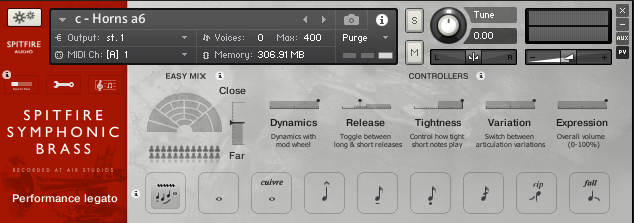
This is a complete collection of powerful brass sounds including solo, a2 and a6 combinations. It includes all the standard brass articulations plus rips, falls, long flutters, glissandi and a Mariachi vibrato that is all-too-real. Explore the depths of hell with the Contrabass Tuba going down to MIDI note C-0. The familiar Spitfire palette of controls will get you up and running quickly as you compile custom instrumental configurations based on your needs.
This is a solid and versatile foundation for all your brass needs capable of everything from solo and chamber groupings to rich symphonic sounds. You will be impressed.
5. Solo Strings

While most string libraries come with solo instrument options, this collection is dedicated to the string soloist with over 40k samples accessible from the familiar GUI. A set of articulations include the typical techniques as well as col legno, col tratto (bowed with the wood), brushed bowing con sord, super sul tasto, a beautiful long progressive vibrato that emerges over time, among other unique effects.
These instruments are extremely playable and feel satisfyingly responsive. Long sustained lines are broken with direction changes in bowing as would be the case with a live player. The velocity sensitivity and depth of these samples is astounding. For example, the staccato articulation in the cello goes from being light and delicate at low velocities to a heavy, longer almost scratch tone at high velocities – very realistic.
A great library for adding that soaring string soloist that needs to cut through the texture or a simple expressive single line when it’s needed.
Composer-Inspired Toolkits
The following libraries were created in collaboration with various composers and include a variety of content, techniques, textures and timbres that set them apart from more traditional collections.
1. British Drama Toolkit
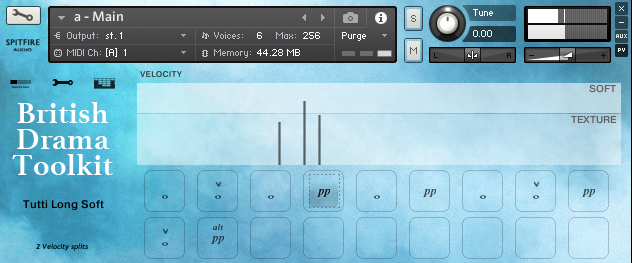
These samples are based on a small string and woodwind section recorded on a dry stage. Driven by a collaboration with composer Samuel Sim, the interface of this library departs from prior instruments discussed so far. Velocity plays a major role as a spectrum ranging from textural to soft to loud can be navigated purely by the velocity of the event. Not only does loudness and timbre change, but orchestration choices are integrated into the continuum of the ensemble instruments. A single note at very low velocity that sounds like air blown through a wind instrument can magically change to a different wind sound at a higher velocity with added strings as you get louder. The sustained sonorities swell expressively and naturally. There are also some unusual techniques such as Long Chatter (repeating a note with random rhythms) and Long Chiffs (sharp bursts of air at the start of a note), both reminiscent of the aleatoric looping structures in the music of Witold Lutoslawski.
This library definitely has a “sound,” but it may just have the right sound for the right place in your work. And if you’ve got a fast-approaching deadline, it could be exactly what you need.
2. Hauschka Composer Toolkit
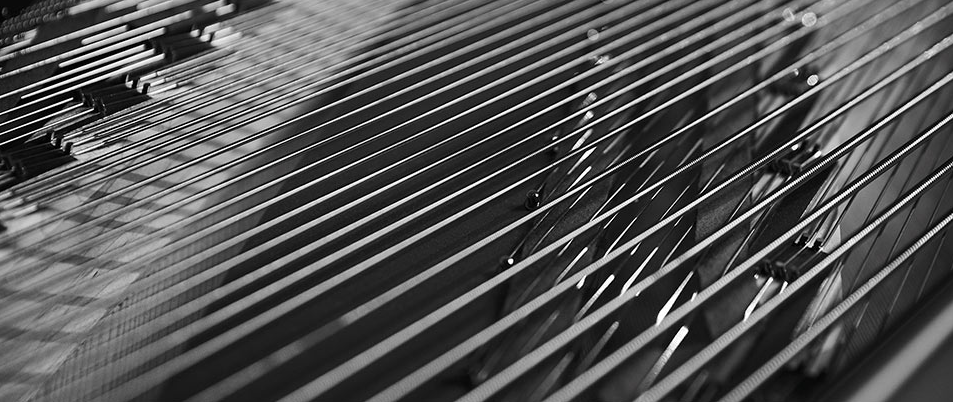
This library was created in collaboration with composer, Volker Bertelmann, aka Hauschka. It is based on a collection of prepared piano samples, a technique developed by John Cage in the 1940’s with his landmark piece, Sonatas and Interludes for Prepared Piano. The idea involved the placement of various objects (nuts, bolts, screws, etc.) on the piano strings to inhibit or otherwise alter that natural vibration of the string, creating percussive and noise-based sounds far removed from the sound of a typical piano. The Hauschka instrument takes this idea further adding ping-pong ball effects, gaffer tape, fingernail plucks, wood mutes, analog and digital effects processing, mic mixes and modulation available via the three distinct GUI’s.
The Simple and Expert Views will look familiar to Spitfire users with controls for mic and effects mixing, dynamics, expression, ostinatum, etc.

The Grid or pegboard includes a matrix of toggles that allows the user to change a sound relative to a particular pitch. There are randomization options here, ADSR controls, effect parameter controls and signal level sliders. As described in the manual, “Sounds found in the Grid are considerably long sounds that vary over time. This is because they evolve, change, mutate, and return to their original state before looping. We purposefully record each at a different tempo so when you select different pegs on the grid, and play them together, after a while the different sounds will start to undulate against each other.”
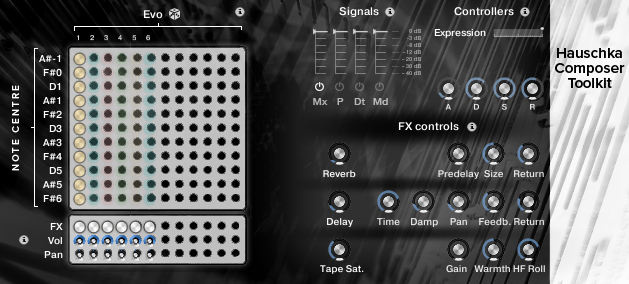
The Mercury Synth interface is used for the warped sounds and includes three LFO’s, HP and LP filters, various digital effects and an assignable XY controller called the YOKE.

This library goes well beyond what you might expect in a prepared piano collection. It is perfect for generating unusual and evolving textures and complex rhythmic content.
3. Hans Zimmer Piano
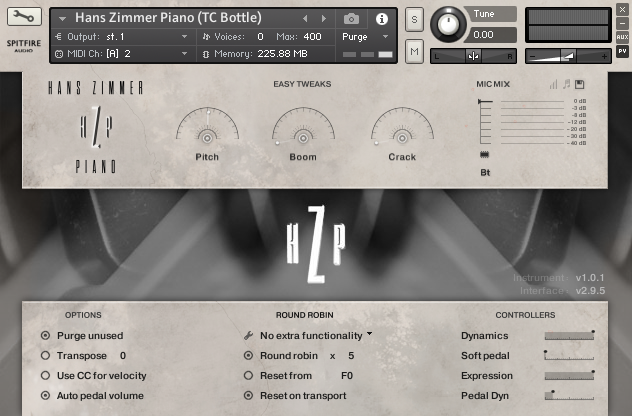
Another piano-based instrument is the Hans Zimmer Piano, which takes a very different approach. Over 60 microphones were used along with the Neve 88R at Air Studios. The focus is on the beauty of the acoustic potential of the piano as opposed to effects processing. There are prepared piano samples and those made by activating vibrations in a variety of ways using numerous exciters such as mallets, fingernails, sticks, etc. The soft piano and muted patches are quite lovely and playable. While the Full and Bright patch interfaces are similar to other Spitfire instruments, the Main View differs in layout but remains user-friendly with three easy-tweak controls for adjusting the pitch (three octaves up or down), boom (LP filter cut-off) and crack (HP filter cut-off).
The collection is huge with over 88,000 samples and topping out at 452 GB of uncompressed wave files (using 211 GB of storage). It is obvious that each sample has been painstakingly tweaked for this library and the variety in mic positioning gives the user a wealth of choices in terms of the spatial and timbral qualities of the sound. Really nice!
4. Hans Zimmer Professional Percussion
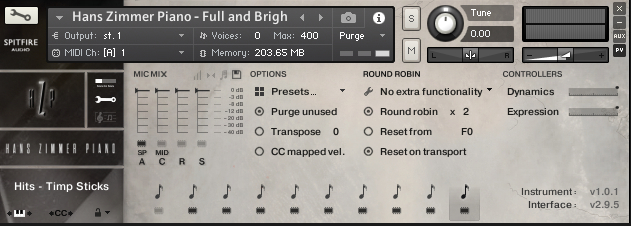
This is another collaboration with Zimmer that gives the user access to those huge iconic percussive sounds that have been heard in so many films. There are many world instruments included along with traditional classical instruments and a variety of playing techniques like rolls, scrapes, flams, chokes, hand hits, taps, etc. The main interface gives quick access for mapping and a special timpani interface for tweaking those sounds. Numerous presets are available that focus on certain elements as needed so that loading time can be reduced as well.
These samples are fantastic and the variety of playing techniques and exotic percussion make this an essential instrument library for anyone that needs those iconic cinematic percussive elements in their work.
5. Kepler Orchestra
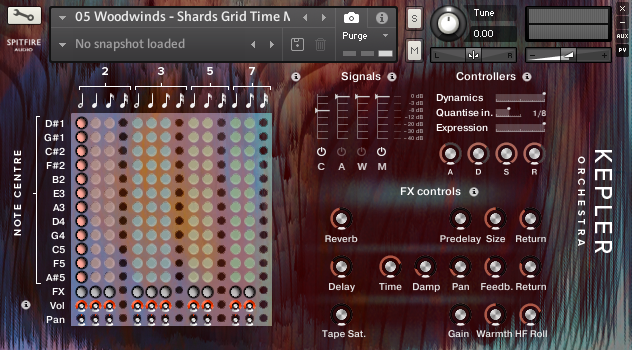
This instrument is inspired by the Systems music that emerged in the 60’s by minimalist composers like Steve Reich, Philip Glass, and Terry Riley. Using the EVO Grid interface you can quickly generate complex and evolving rhythmic content that paradoxically creates a sense a movement and stasis at once. If you are new to this compositional approach I highly recommend listening to Reich’s seminal work, Music for 18 Musicians and Terry Riley’s, In C.
This a full orchestral collection that includes strings, winds and brass. You won’t get the full complement of articulations found in other Spitfire libraries, but that is not the intent here. This collection is all about rhythm and gradual system processes that unfold over time. That said the Warped patches allow for subtle to extreme synth-like mangling and processing of orchestral sounds using Spitfire’s Mercury Synth interface shown below.
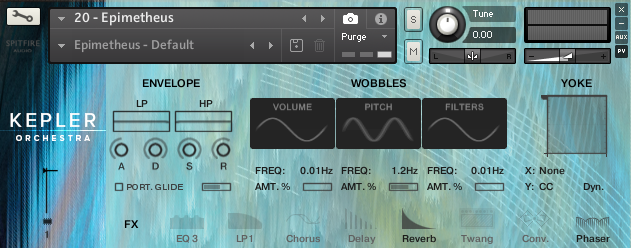
This a great instrument for exploring new rhythmic ideas with orchestral sounds, and the addition of the warped patches make it an excellent sound design tool as well.
6. Olafur Arnalds Stratus
The newly released library from Spitfire Audio called Ólafur Arnalds Stratus is billed as the piano, reimagined. The eponymous library is the result of Spitfire Audio’s collaboration with the Icelandic composer and producer known for his work on myriad films and television shows, and music.
The usual premise behind this collection is the use of two self-playing pianos which Arnalds had acquired as a solution to his lack of dexterity following an automobile accident in which he suffered a spinal injury.
But beyond the unusual sound sources, Stratus employs unique complex rhythmic delays that are generated by repeating actual played notes by the two pianos, instead of standard delay processing. There is a piano overlay sound situated in the center with the self-playing piano sounds spaced to the right and left by default.
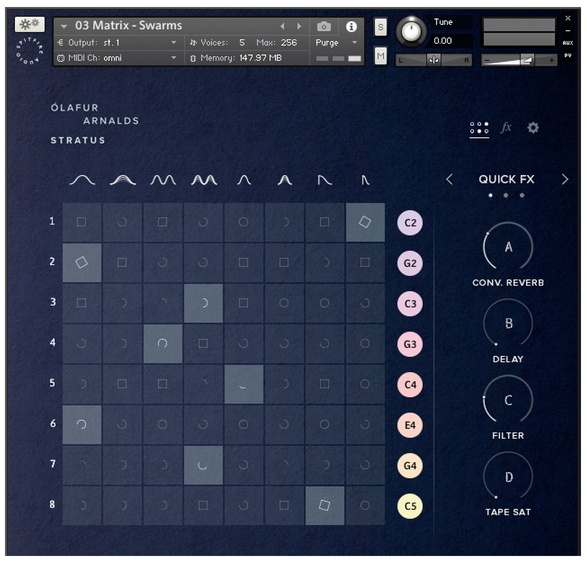
Robust randomization features and a graphic matrix can create continually evolving textures using the piano samples or the included synth. And as the composer suggests, these rhythmic complexes could also be transcribed and used as the basis for acoustic orchestrations or melodic ideas.
Stratus encourages the user to experiment and rewards deep exploration with beautiful and astonishing results. This is a fantastic instrument that only gets better the more you play it!
Sound Design and Special FX
1. Ambient Guitars
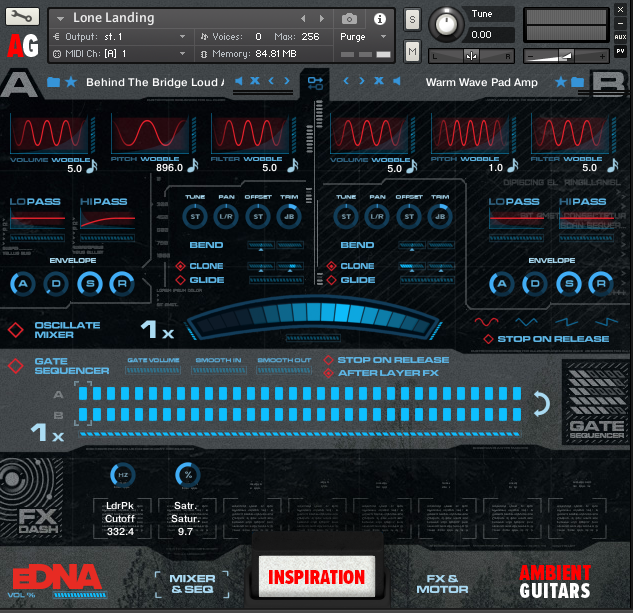
The strength of this library is clearly oriented towards sound design, lush ambient pads and evolving soundscapes. It includes several interfaces including the EVO grid with randomization options that enable the layering of unique combinations of sounds with a single click. It takes a great deal of time to explore the possibilities of the various patch categories including: inspiration, distorted, enigmatic pads, arps & chords, odd loopers and others. This is a deep instrument with a plethora of modulation and processing effects, a gate sequencer and the ability to crossfade between two oscillator sections.
If you like weird and heavily processed guitar sounds (and who doesn’t?) you will like this instrument.
2. Sound Dust
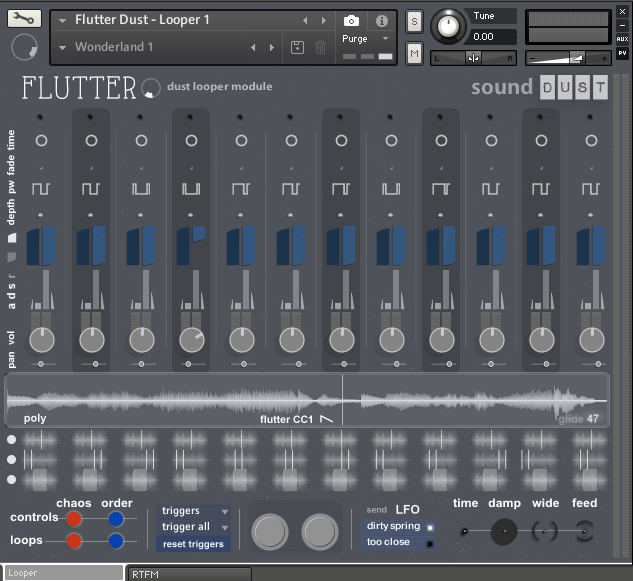
The libraries consist of two volumes of strange sounds and instruments created in collaboration with sound designer and composer, Pendle Poucher. The instruments include five distinct interfaces that access an enormous variety of sounds.
The Flutter Dust instrument (shown above) has a looper and wavetable view. The playback cursor jumps around an existing sound file and is sort of a granular approach to sound design.
The Infundibulum instrument has three independent 64 step sequencers and is capable of astounding rhythmic complexity.
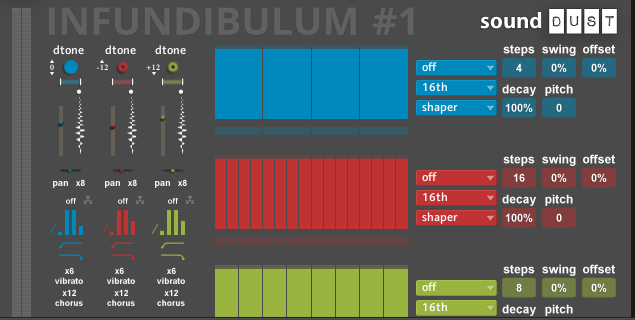
The Oddhop instrument has three distinct views and is a super powerful drum machine-like device driven by pure chaos.
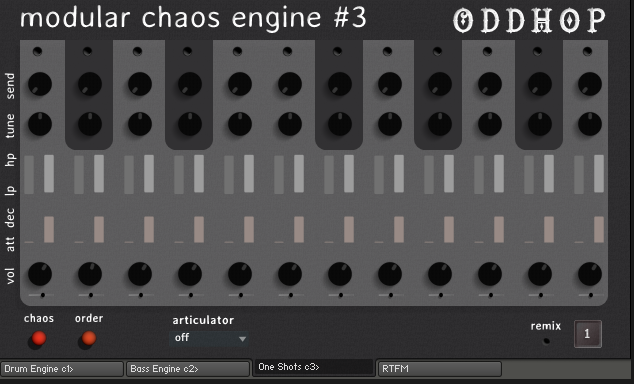
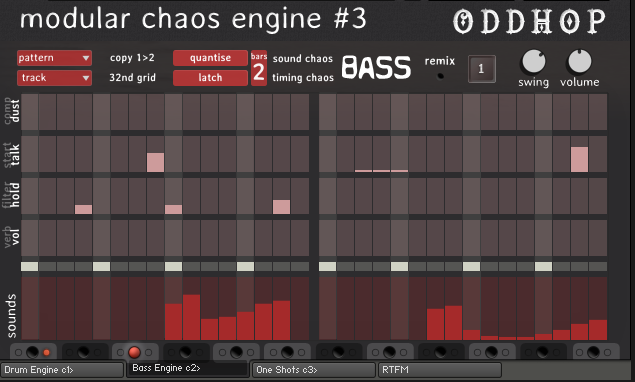
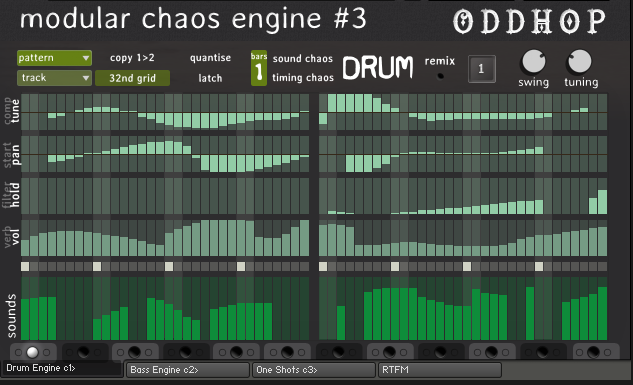
The Pendleonium instrument accesses six heavily processed and layered string instruments.
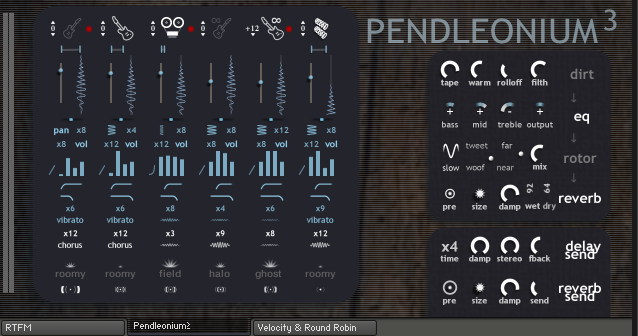
The Ships Piano instrument combines three distinct sampled pianos and a variety of effects including the clever step sequencer: The Satie-anator
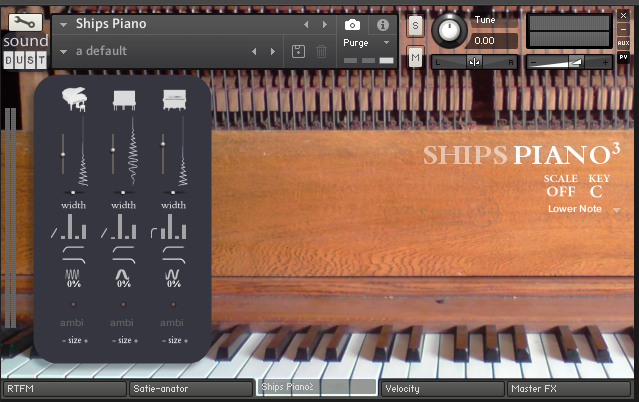
Sound Dust is a sound designer’s rabbit hole, and the deeper you go, the more you discover what this thing is capable of. A truly addictive instrument that is really fun to play!
Plugins (VST/AU/AAX)
1. Hans Zimmer Strings
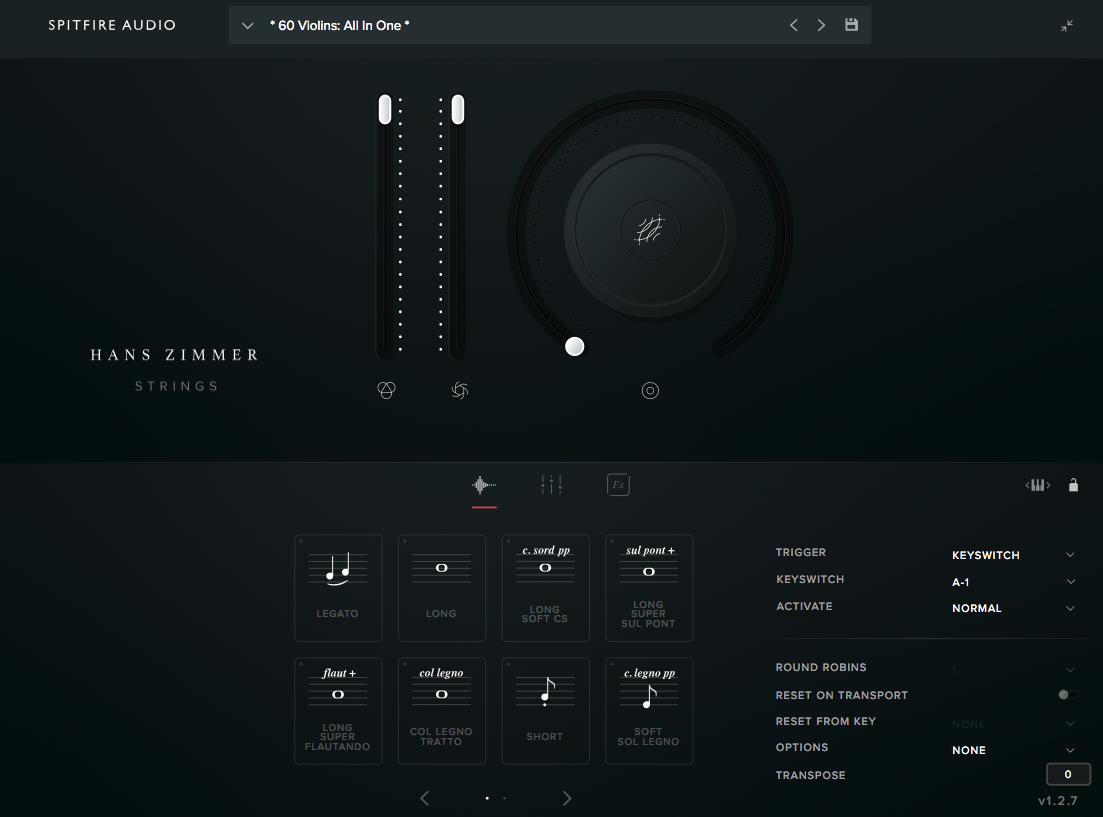
In this plugin, Hans Zimmer continues his collaboration with Spitfire presenting an instrument capable of soaring epic string sections that are dripping with cinematic texture. Articulations include the standard fare plus things like col legno tratto (bowing with the wood) and a few other special effect gestures like cluster slides and chatter. The interface is clean and elegant with quick access to articulations, mic mixes, and useful controls like tightness, vibrato, release and reverb. The sections sound huge, including up to: 60 violins, 20 violas, 60 cellos and 24 basses.
The instrument is great for lush, wet string textures and the interface makes it easy to access just the sounds you need quickly using a convenient and intelligent drop-down menu.
2. Angular String Evolutions, Fragile String Evolutions & Woodwind Evolutions
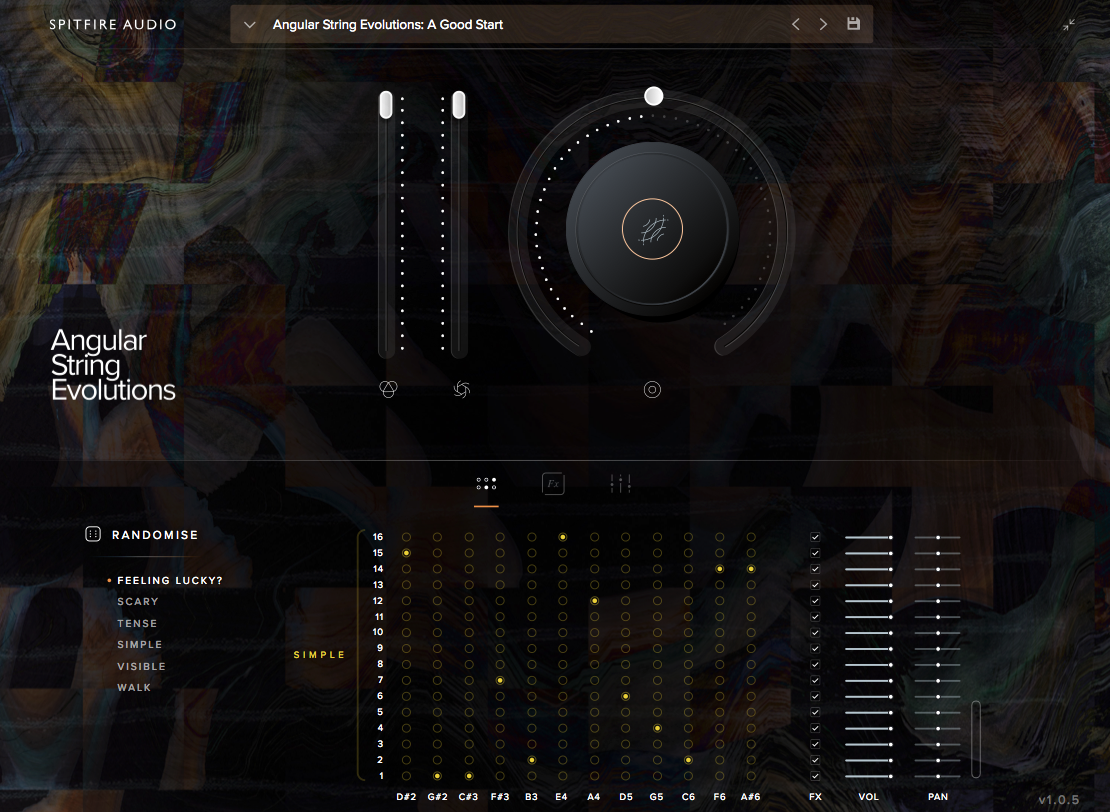
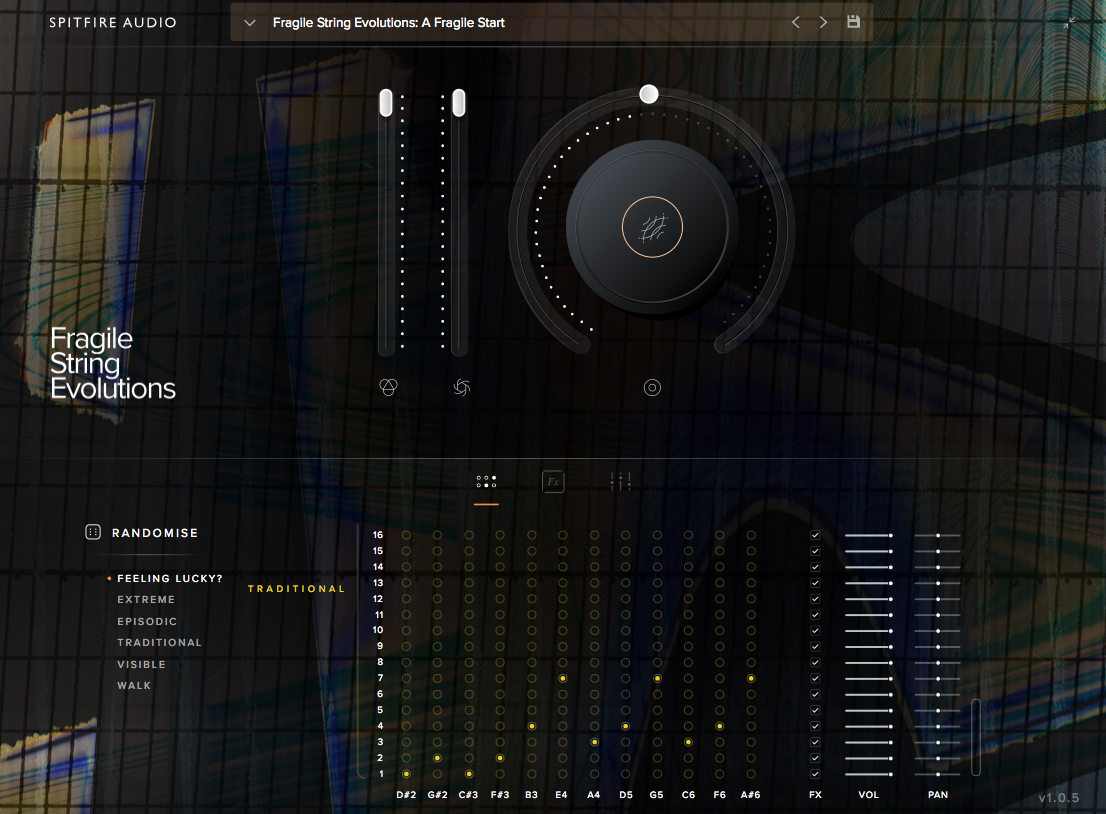
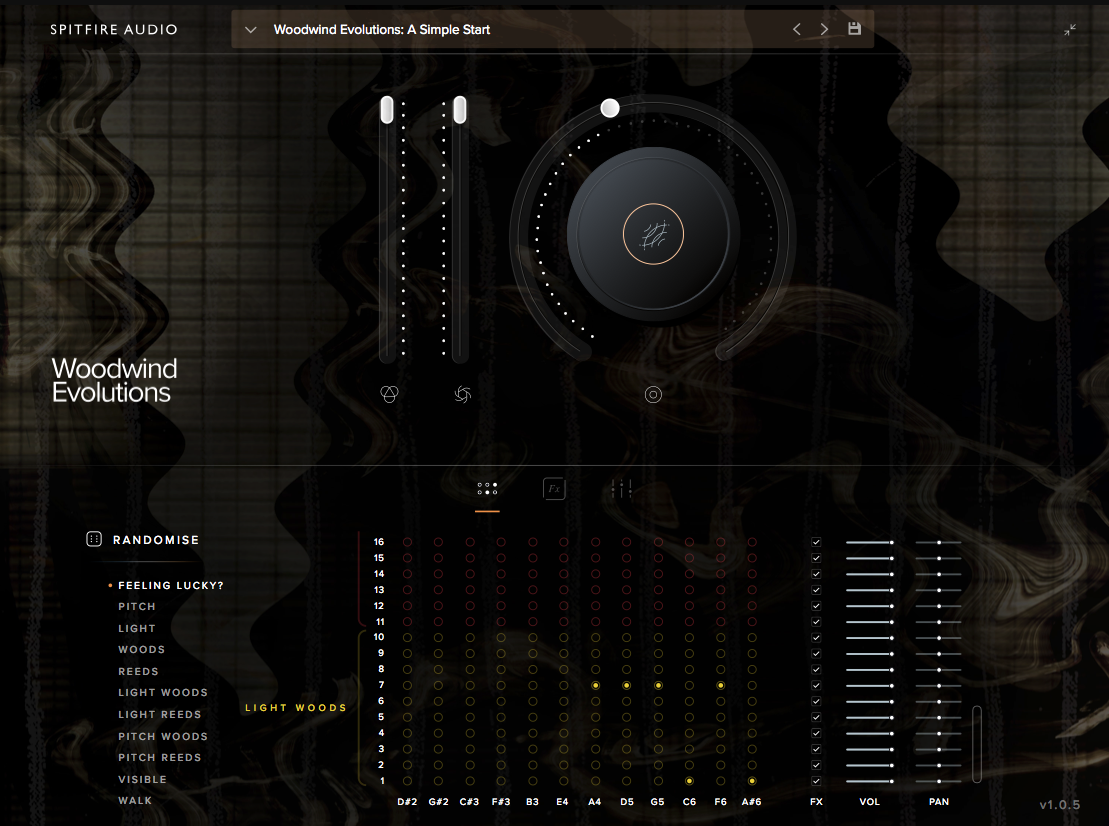
These instruments all share a common interface that features the EVO Grid. The Grid allows access to a large variety of shimmering, glistening textural instrumental effects that can be layered over time to produce rich gradually changing sonorities. The level and spatial placement of each sound can be individually adjusted and grid selections can be randomized with a click. Three main mappable controls dominate the top of the interface: Expression, Dynamics and a large multi-use Knob. Three sub-windows at the bottom expose controls for the grid, FX processing, and mix/envelope parameters.
I’m not altogether sure how these things are structured under the hood, but it is truly magical how quickly you can generate amazing sounds that stretch the boundaries of what can be considered realistic without the overuse of digital FX processing.
FREE
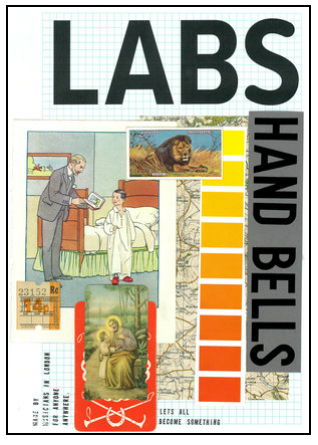
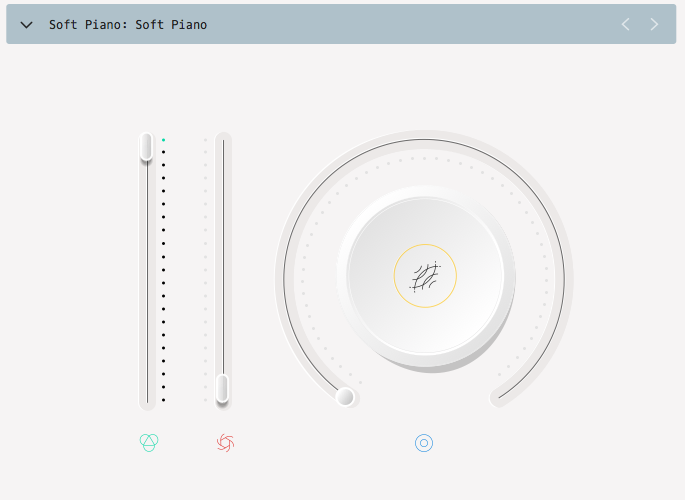
The LABS series of virtual instruments is a free collection that continues to grow and currently includes 13 instruments: Dulcimer, Scary Strings, Modular Piano, Peel Guitar, Frozen Strings, Synth Pads, Choir, Charango, Electric Piano, Amplified Cello Quartet, Drums, Soft Piano, and Strings. The instruments share a hyper-simple three control interface. While user control is limited, it must be admitted that these instruments sound fantastic. You could think of each as a tweaked out sound ready to go. If it happens to match your vision for the project at hand — perfect. And for the cost of ZERO, you’d be remiss not to check out what they have to offer. But be forewarned, once you get a taste for what a good sample library sounds like, you will likely wander deeper into the world of the un-free.
Conclusions
Mentioned above are instruments I have personal experience with but there are many, many more Spitfire libraries I’ve yet to experience. So as always, I encourage your comments and suggestions. The company has maintained an extraordinary level of quality and is prolific in growing its catalog with new offerings on a regular basis. I suggest that their success is due in large part to the numerous collaborations with renown composers, sound designers and engineers, and of course the fine musicians actually making the sounds. There is clearly a spirit of experimentation that dominates the underlying philosophy of Spitfire’s approach that can be truly appreciated any composer or sound designer.
Check out my other articles, reviews and interviews
Follow me on Twitter / Instagram / YouTube






